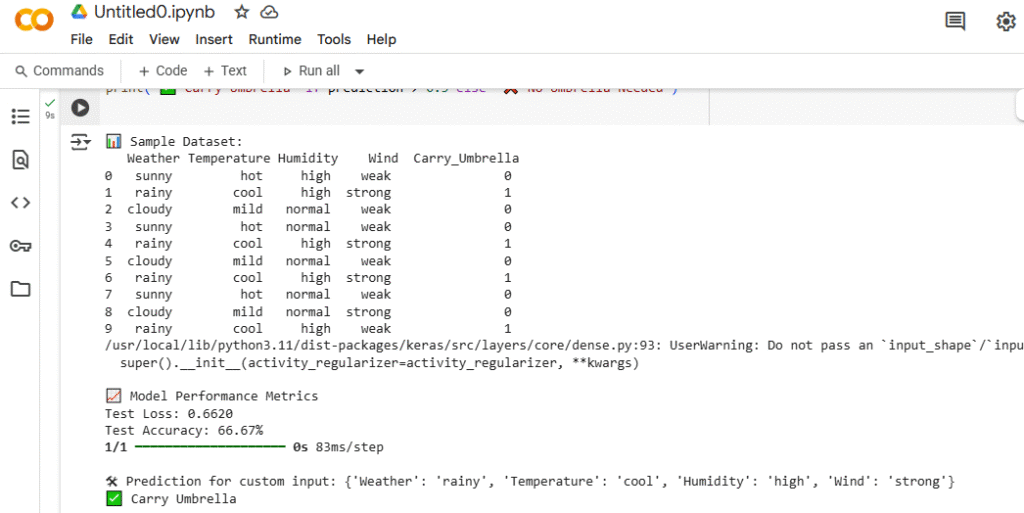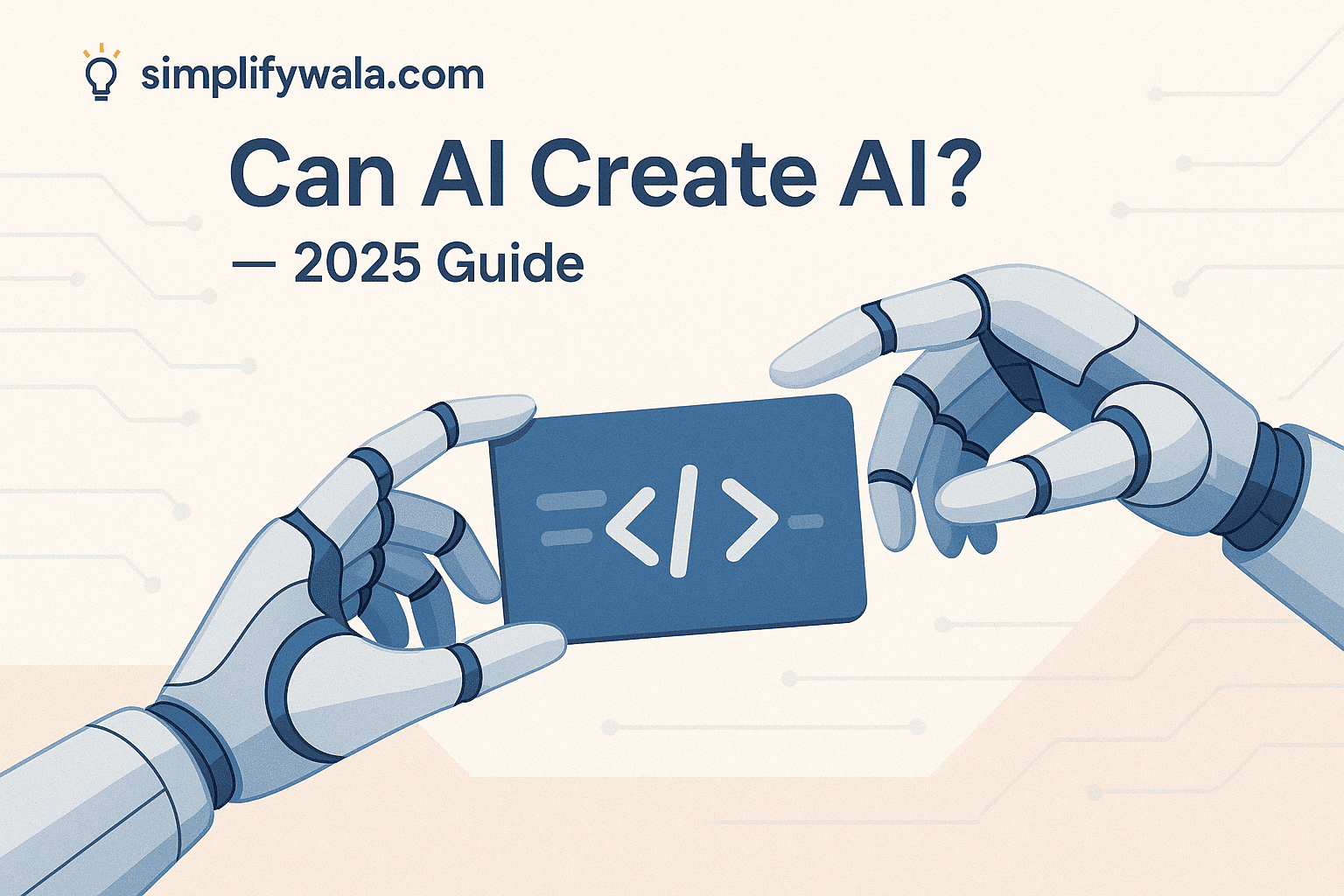Imagine an AI that designs, tests, and ships another AI — no human engineer required. It sounds like sci-fi, but tools like AutoML and Neural Architecture Search make it real today. Let’s unpack how this works, what it means, and how you can try a small demo yourself.
What “AI creating AI” really means
When people say “AI creates AI” they usually mean systems that automatically design, tune, or train machine-learning models with minimal human intervention. That includes:
- AutoML / Auto Neural Architecture Search (NAS) — algorithms search model architectures and hyperparameters automatically.
- Self-training agents — systems that generate data, train models and then iterate (e.g., AlphaZero style self-play).
- AI-assisted code generation for ML pipelines — where LLMs help produce training code, deployment templates, or inference wrappers.
Real-world examples (not just theory)
- Google AutoML: AutoML can automatically search for model architectures tuned for a task and has been used inside Google products.
- Neural Architecture Search (NAS): research papers and products that evolve network structures automatically.
- AlphaZero / self-play: systems that learn by simulating games against themselves and produce state-of-the-art players.
- Chip & hardware co-design — companies using ML to propose hardware layouts (AI aiding hardware design).
How it actually works — simple 4-step view
- Define the goal: classification accuracy, latency, memory footprint, etc.
- Generate candidates: the AutoML/NAS system proposes model designs or pipelines (different layers, hyperparameters).
- Train & evaluate: each candidate is trained (often quickly, with proxies) and evaluated on validation data.
- Select & iterate: best candidate selected; system may iterate or ensemble models.
AI Creates AI: Building a Simple Machine Learning Model to Predict If You Need an Umbrella
Ever wondered how machine learning can make simple, everyday predictions?
In this blog, we’ll walk through a quick project where an AI model learns to decide whether you should carry an umbrella — based on the weather.
This is an easy introduction to AI creates AI — where an AI (ChatGpt) writes code for another AI (your ML model) to run.
Project Overview
We’ll:
- Create a small dataset of weather conditions.
- Encode the text data into numbers.
- Build and train a simple neural network in TensorFlow.
- Test the model’s accuracy.
- Make a real prediction.
📊 Dataset
Here’s what our example dataset looks like:
| Weather | Temperature | Humidity | Wind | Carry_Umbrella |
|---|---|---|---|---|
| sunny | hot | high | weak | 0 |
| rainy | cool | high | strong | 1 |
| cloudy | mild | normal | weak | 0 |
| … | … | … | … | … |
🖥️ The Full Colab Script
💡 Tip: You can run this code directly in Google Colab — just copy & paste it into a new notebook.
#📌 AI Creates AI Example: Simple ML Model to Predict Umbrella Need
# 1️⃣ Install & Import Libraries
!pip install tensorflow numpy scikit-learn --quiet
import numpy as np
import pandas as pd
from sklearn.model_selection import train_test_split
from sklearn.preprocessing import LabelEncoder
from tensorflow.keras.models import Sequential
from tensorflow.keras.layers import Dense
# 2️⃣ Create Example Dataset
data = pd.DataFrame({
'Weather': ['sunny', 'rainy', 'cloudy', 'sunny', 'rainy', 'cloudy', 'rainy', 'sunny', 'cloudy', 'rainy'],
'Temperature': ['hot', 'cool', 'mild', 'hot', 'cool', 'mild', 'cool', 'hot', 'mild', 'cool'],
'Humidity': ['high', 'high', 'normal', 'normal', 'high', 'normal', 'high', 'normal', 'normal', 'high'],
'Wind': ['weak', 'strong', 'weak', 'weak', 'strong', 'weak', 'strong', 'weak', 'strong', 'weak'],
'Carry_Umbrella': [0, 1, 0, 0, 1, 0, 1, 0, 0, 1] # 1 = Yes, 0 = No
})
print("📊 Sample Dataset:\n", data)
# 3️⃣ Encode Categorical Features
le_weather = LabelEncoder()
le_temp = LabelEncoder()
le_humidity = LabelEncoder()
le_wind = LabelEncoder()
data['Weather'] = le_weather.fit_transform(data['Weather'])
data['Temperature'] = le_temp.fit_transform(data['Temperature'])
data['Humidity'] = le_humidity.fit_transform(data['Humidity'])
data['Wind'] = le_wind.fit_transform(data['Wind'])
# 4️⃣ Split Data
X = data.drop('Carry_Umbrella', axis=1)
y = data['Carry_Umbrella']
X_train, X_test, y_train, y_test = train_test_split(X, y, test_size=0.3, random_state=42)
# 5️⃣ Build Model
model = Sequential([
Dense(8, input_dim=X.shape[1], activation='relu'),
Dense(4, activation='relu'),
Dense(1, activation='sigmoid')
])
model.compile(loss='binary_crossentropy', optimizer='adam', metrics=['accuracy'])
# 6️⃣ Train Model
model.fit(X_train, y_train, epochs=50, batch_size=2, verbose=0)
# 7️⃣ Evaluate Model
loss, accuracy = model.evaluate(X_test, y_test, verbose=0)
print("\n📈 Model Performance Metrics")
print(f"Test Loss: {loss:.4f}")
print(f"Test Accuracy: {accuracy:.2%}")
# 8️⃣ Make Prediction for Custom Input
custom_input = {
'Weather': 'rainy',
'Temperature': 'cool',
'Humidity': 'high',
'Wind': 'strong'
}
custom_encoded = [
le_weather.transform([custom_input['Weather']])[0],
le_temp.transform([custom_input['Temperature']])[0],
le_humidity.transform([custom_input['Humidity']])[0],
le_wind.transform([custom_input['Wind']])[0]
]
# Convert to correct shape for prediction
custom_encoded_array = np.array(custom_encoded).reshape(1, -1)
prediction = model.predict(custom_encoded_array)[0][0]
print("\n🛠 Prediction for custom input:", custom_input)
print("✅ Carry Umbrella" if prediction > 0.5 else "❌ No Umbrella Needed")
📈 Model Accuracy
When I ran the model, I got the following output:
📈 Model Performance Metrics
Test Loss: 0.6620
Test Accuracy: 66.67%

🔮 Example Prediction Output
For the input:
{'Weather': 'rainy', 'Temperature': 'cool', 'Humidity': 'high', 'Wind': 'strong'}
The model predicted:
✅ Carry Umbrella
✅ Key Takeaways
- Machine learning can be explained with simple, relatable examples.
- Even a tiny dataset can be used to build a working model.
- Google Colab makes running AI code free and easy.
Why companies use AI → AI workflows
- Faster experimentation and cheaper model search
- Scale: deploy many task-specific models with less human time
- Potentially reduce human bias in tuning (but not always)
Benefits — and where they’re overstated
Benefits: speed, cheaper prototyping, automated hyperparameter tuning, democratizing ML for fewer-expert teams.
Where hype outruns reality: AutoML doesn’t replace ML expertise. Human oversight matters for data quality, fairness, safety, and reliable deployment.
Risks & ethical concerns
- Loss of oversight: models selected automatically can be opaque (“black boxes”).
- Bias amplification: AutoML optimizes metrics — if training data is biased, AutoML can entrench the bias faster.
- Security & misuse: automated model creation may speed up harmful capabilities if released without controls.
Human jobs & the future: Will AI replace AI engineers?
Short answer: not fully. The role shifts. Engineers will focus more on:
- Defining problems & evaluation metrics
- Data engineering & cleaning
- ML governance, interpretability, and safety
Human-built AI vs AI-built AI — quick comparison
| Aspect | Human-built | AI-built (AutoML) |
|---|---|---|
| Speed | Slow (manual tuning) | Faster (search & tune) |
| Cost | High human time | Compute cost; lower human time |
| Understanding | Higher (by devs) | Lower — black box risk |
| Suitability | Custom models / research | Production-ready baseline models |
What you can do today (practical checklist)
- Learn the basics of AutoML (FLAML, AutoKeras, Auto-sklearn).
- Practice small demos (Iris / Titanic dataset) — follow Colab steps above.
- Focus on data quality & metrics — AutoML only optimizes the metric you give it.
- Learn ML governance (explainability, fairness checks).
- Keep an eye on dependencies — libraries sometimes require older NumPy (workaround: pin version in Colab/virtualenv).
FAQ
Q: Can an AI fully replace ML engineers? A: Not today. AI speeds up parts of the workflow; engineers still design experiments, handle data, and ensure safety.
Q: Is running AutoML easy for beginners? A: Yes — but beware of hidden costs (compute, data leakage). Start small and validate results manually.
Q: Where can I learn more? A: Look at AutoML docs (FLAML, AutoKeras), NasNet/NAS papers, and Google research articles.
Checklist Freebie
📌 Download your AI Creation Flowchart – Beginners Checklist (PDF) to keep your process organized.
Conclusion — the smart, human role
Yes — AI systems today can create other AI models (in narrow, controlled ways). But this augments human work, it doesn’t replace good judgement. If you want to explore, try the Colab demo above. Share your results & questions below — I’d love to see what you build!
Try the Colab demo and share your accuracy result in the comments: “Tried it — here’s my accuracy: ___”.

